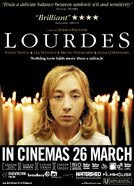
"You and I are gonna live forever/ we're gonna live forever," sang Oasis. For most of us, these sentiments are a hollow anthem for doomed youth. Nineteen year olds may, for a brief moment, swallow such naive ideas in the environment of a muddy Glastonbury field. But these ideas are not for the real world of ageing and decay. There is, however, a growing number of people for whom the idea of "life extension" has become a reality. Something that was unattainable, they argue, will become medically achievable. The catastrophe of 100,000 people dying every day will come to an end. Thanks to advances in medical science and its interventions, the "ageing gene" will be switched off and the old enemy, death, will be defeated. There are those who believe that presently living among us are human beings who will, one day in the future, blow out a thousand candles on their birthday cake...and if that doesn't kill them, then nothing will. Of course, they may leave their 1000th birthday party and still be hit by a car and killed, but what won't kill them is disease, virus or old age. In this brave new world, death will be postponed indefinitely.
This sounds like the stuff from a Philip K.Dick or Isaac Asimov science fiction novel. Yet, these evangelical preachers of immortality believe they have science and technology on their side. And who among us, facing death, would reject some medical intervention if we thought we could be restored to the health and well-being of our youth?
Bryan Appleyard's book, How to Live Forever or Die Trying: On the New Immortality, provides a stimulating overview of the current pursuit for eternal life. The central questions at the heart of his study are whether we do want to live forever and what would living forever look like. Imagining a world without death is an intriguing and disturbing business. Great works of art that have considered the transience of love and beauty (which is almost all great works of art) would become redundant overnight. The meaning of love would be relativised. The words "'till death do us part" would become obsolete as relationships went on for centuries. How would the new immortals fill their days? Surely, there's only so much television that you can watch, only so much shopping that you can do before boredom sets in? How would you fill a life that lasted for a thousand plus years? As events faded with time, we would have no memory of ourselves and "medical immortals will simply have to resign themselves to amnesia, to becoming serial, forgetful selves." Suddenly, the science of permanent life extension begins to sound more problematic.
Man alone knows death. As Jorge Luis Borges wrote, "To be immortal is commonplace; except for man, all creatures are immortal, for they are ignorant of death..." Everything we are as human beings and as a society is shaped by this knowledge of death. We may abhor this knowledge and find ways to deny and avoid it, but it remains, whether we like it or not, the horizon against which we live. But if death could be postponed indefinitely, then the way we understood ourselves would be revolutionised. We would need to invent new concepts, beyond our current imagining, with which to make sense of ourselves. This would be akin to man creating fire for the first time. In the meantime, we remain beings-unto-death and both evolutionary science and religion traditionally accept this view. Appleyard quotes the theologian John Bowker who writes:
...first, in rejecting the view that we are trivial and of little worth because the universe is so immense and because its processes include randomness and chance...and, second, in affirming the high value of death as the necessary condition of life. Both, in their different languages, are saying the same thing: it is not possible to have life on any other terms than those of death; but where you do have death, there immediately you have the possibility of life.
But the school of immortality regard such views as a passive resignation to the fact of death. They want to challenge this view and one of the radical (some say, deranged) exponents of life extension is Dr Aubrey de Grey. "He seems to have sprung from the pages of a Dostoevsky novel," writes Appleyard, "a saint or a demon but nothing in between."




